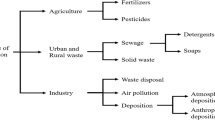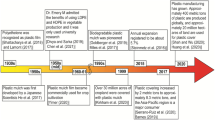Abstract
Quantitative EPR technique was applied to examine Cu(II) complexes and free radicals in soil and municipal solid waste composts. Production and stabilization of free radicals in humic and humic-like substances depend on transition metal containing red-ox systems in soil. Termination of the reaction pathways yields relatively stable semiquinone free radicals in the polyphenol and melanoidin matrices. EPR investigations of municipal solid waste composts in different stages of their maturity show distinct correlation between free radical concentration and microbiological activity. Copper(II) sorption by living microorganisms and formation of the copper(II) complexes by humic substances in soils (Cambisols and Luvisols) result in decrease of the concentration of the semiquinone radicals. The Cu(II) complexes formed by various natural humic and humic-like substances produced in the composts were characterized on the basis of EPR measurements. The process of solubilization of inorganic copper compounds in soil and composts, and free radical activity in soil and composts can be characterized using EPR technique as the monitoring method.
Similar content being viewed by others
References
Lisowski J., Jezierski A., Byliñska E.: Appl. Magn. Reson.5, 15 (1993)
Jezierski A., Bylinska E.: EPR Newsletter8, no. 4, 8 (1997)
Drozd J., Jezierski A.: Humic Substances in the Global Environment and Implications on Human Health (Senesi N., Miano T., eds.), PP. 1119–1124. Amsterdam: Elsevier 1994.
Drozd J., Chen Y., Jezierski A. in: Modern Agriculture and the Environment (Rosen D., ed.), pp. 395–400. Dordrecht: Kluwer Academic Publishers 1997.
Golab Z., Breitenbach M., Jezierski A.: Water, Air Soil Poll.82, 713 (1995)
Czechowski F., Jezierski A.: Energy Fuels11, 951 (1997)
Baranowski A., Dêbowska M., Jerie K., Jezierski A., Sachanbiñski M.: Acta Phys. Pol. A88, 1, 29 (1995); Janczak A., Kubiak R., Jezierski A.: Inorg. Chem.34, 3505 (1995)
Senesi N.: Humus, Its Structure and Role in Agriculture and Environment (Kubat J., ed.), pp. 11–26. Amsterdam: Elsevier 1992.
Senesi N., Brunetti G.: The Science of Composting (de Bertoldi M., Sequi P., Lemmes B., Papi T., eds.), pp. 195–212. London: Blackie Academic and Professional 1996.
Ikan R. (ed.): The Maillard Reaction. New York: J. Wiley & Sons 1996.
Stevenson F.J.: Humus Chemistry: Genesis, Composition, Reactions. New York: Wiley-Interscience 1982.
Peisach J., Blumberg W.E.: Arch. Biochem. Biophys.165, 691 (1974)
Latos-Grażyński L., Jezierski A.: Inorg. Chim. Acta106, 13 (1985)
Author information
Authors and Affiliations
Rights and permissions
About this article
Cite this article
Jezierski, A., Drozd, J., Jerzykiewicz, M. et al. EPR in the environmental control: Copper complexes and free radicals in soil and municipal solid waste compost. Appl. Magn. Reson. 14, 275–282 (1998). https://doi.org/10.1007/BF03161894
Received:
Issue Date:
DOI: https://doi.org/10.1007/BF03161894




